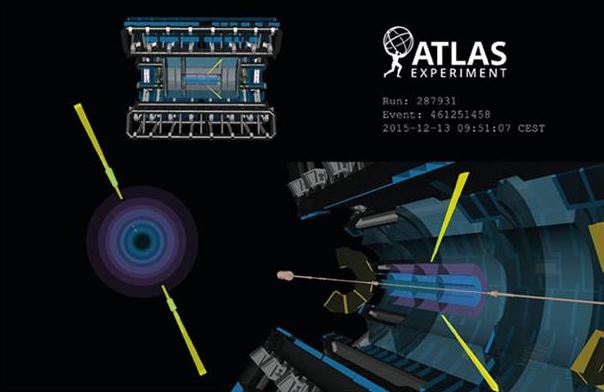Direct evidence for light-by-light scattering at high energy had proven elusive for decade but as the Large Hadron Collider’s second run began in 2015 it collided lead ions at unprecedented collision rates. Heavy-ion collisions provide a uniquely clean environment to study light-by-light scattering. As bunches of lead ions are accelerated, an enormous flux of surrounding photons is generated. When ions meet at the center of the ATLAS detector, very few collide, yet their surrounding photons can interact and scatter off one another. These interactions are known as ‘ultra-peripheral collisions’.
Studying more than 4 billion events taken in 2015, the ATLAS collaboration found 13 candidates for light-by-light scattering. This result has a significance of 4.4 standard deviations, allowing the ATLAS collaboration to report the first direct evidence of this phenomenon at high energy.

Light-by-light scattering candidate event measured in the ATLAS detector. Image: CERN
“This measurement has been of great interest to the heavy-ion and high-energy physics communities for several years, as calculations from several groups showed that we might achieve a significant signal by studying lead-ion collisions in Run 2,” says Peter Steinberg, ATLAS Heavy Ion Physics Group Convener.
ATLAS physicists will continue to study light-by-light scattering during the upcoming LHC heavy-ion run, scheduled for 2018.





Comments